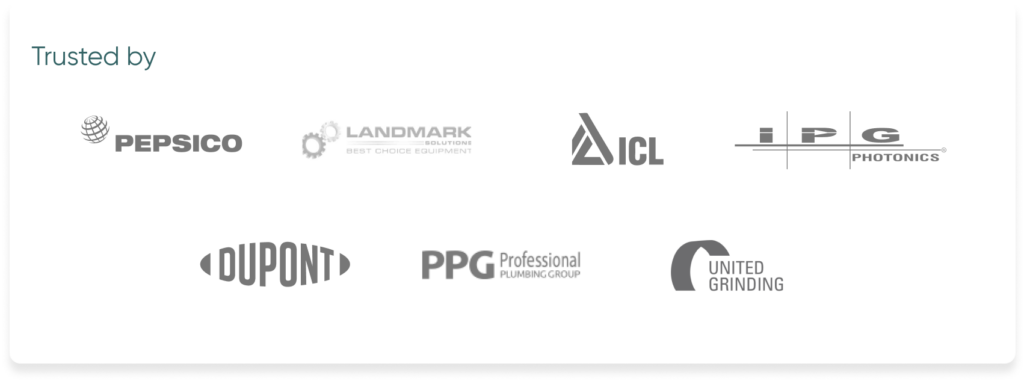Table of Contents
Introduction
As manufacturing companies continue to embrace digital transformation, email campaigns have proven to be one of the most powerful tools for reaching potential customers and maintaining relationships. However, the strategies behind these campaigns are evolving. No longer can manufacturers rely on generic, mass-produced emails. Instead, targeted, data-driven campaigns that are built on detailed insights into your Total Addressable Market (TAM) are driving better results.
In this guide, we’ll explore how manufacturers can leverage TAM analysis, data-driven insights, and smarter segmentation to optimize email campaigns, reduce waste, and increase engagement.
The Role of TAM and Data in Modern Email Campaigns
In modern email marketing for manufacturing, one of the most significant advances is the ability to segment your audience based on detailed TAM analysis. By deeply understanding your market, you can identify and target specific Ideal Customer Profiles (ICPs) that are more likely to engage with your message.
For example, using data from TAM analysis allows manufacturers to segment their audience not only by firmographic data—such as company size, revenue, and location—but also by equipment data, which provides insights into the machinery and technology that prospects are using. Combining this with behavioral data, which shows who is actively searching for your solutions, gives manufacturers the ability to craft highly personalized emails. These emails speak directly to the specific needs of each segment, leading to more meaningful engagement and higher conversion rates. Instead of sending the same email to thousands of prospects, you can send tailored messages that resonate with the individual challenges of each segment, improving reply rates and maximizing your outreach efforts.
Smarter Segmentation with Data and Predictive Analytics
Segmentation is more than just a buzzword; it’s a critical component of effective email campaigns. Predictive analytics allows manufacturers to prioritize high-value prospects by using data to forecast which leads are most likely to convert. By combining TAM analysis with predictive analytics, manufacturers can fine-tune their segmentation, ensuring that every email reaches the right audience at the right time.
For instance, a manufacturer targeting companies in need of new equipment can use TAM data to identify firms that are nearing the end of their machinery’s lifecycle. Predictive analytics can further refine this by identifying companies that have shown an increased interest in upgrading their technology, allowing sales teams to focus their efforts on these high-value leads.
By using smarter segmentation, manufacturers can reduce wasted effort, improve response rates, and accelerate sales cycles. This targeted approach is far more efficient than traditional, broad campaigns and can lead to higher engagement and quicker decision-making.
Hyper-Personalization and Increasing Engagement
Email campaigns today need to go beyond simply addressing recipients by name. Hyper-personalization allows manufacturers to create deeply customized messages based on the data they’ve gathered through TAM analysis and behavioral tracking.
Imagine sending a prospect an email that not only speaks to their specific industry but also addresses a known challenge they are facing—such as the need to reduce operational costs or improve production efficiency. By crafting messages that resonate on this level, manufacturers can ensure their emails stand out in crowded inboxes, driving higher engagement and increasing reply rates.
For example, if a prospect has been exploring content related to automated production solutions, sending an email that specifically addresses the benefits of your automation technologies will feel far more relevant than a generic promotional message.
Automating and Optimizing for Efficiency
Automation, coupled with advanced data analytics, is reshaping how manufacturers handle email campaigns. Automated email sequences triggered by customer actions—such as engaging with specific pieces of content—allow manufacturers to follow up with prospects at the right time, without manual intervention. This not only saves time but also increases the likelihood of converting leads.
Predictive analytics further enhances automation by enabling manufacturers to focus on prospects who are showing intent to buy. For example, if a lead has visited your product page multiple times and downloaded relevant case studies, your automated system can trigger a series of personalized emails guiding them toward making a purchase decision.
Measuring Success with Data and Adjusting Campaigns
The success of email campaigns in manufacturing relies on constant measurement and adjustment. Data-driven insights from previous campaigns should be analyzed to refine future efforts. Key metrics such as open rates, click-through rates, and reply rates can indicate which segments are responding well and which need more targeted messaging.
Manufacturers can use this data to continuously improve their campaigns, ensuring that their TAM analysis and predictive models are as accurate as possible. The more targeted and customized your campaigns are, the better your chances of standing out in a competitive market and driving real results.
Conclusion
The future of email campaigns in manufacturing lies in smarter segmentation, advanced data analytics, and hyper-personalization. By leveraging detailed TAM analysis and predictive analytics, manufacturers can ensure their emails are more relevant, targeted, and effective than ever before. With the right strategies in place, email campaigns can become a powerful tool for driving sales, improving engagement, and staying ahead of the competition.
Ready to transform your email campaigns and boost your sales? Book a demo with Explorium today to see how our data solutions can supercharge your marketing efforts and deliver better results.

